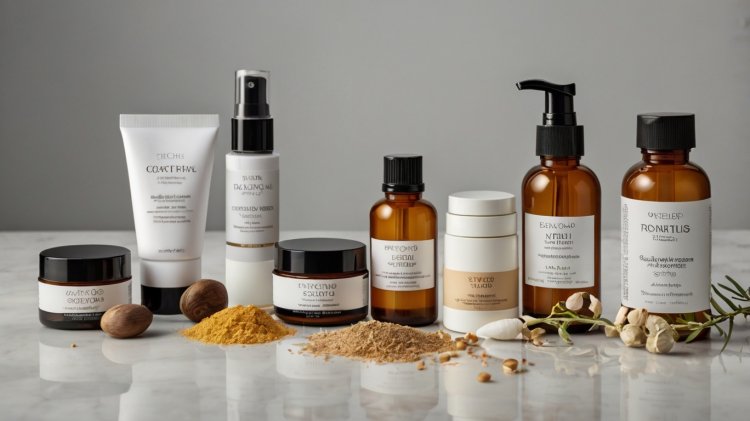Understanding Skincare Ingredients: What Do They Actually Do?
Confused by skincare ingredients? This guide breaks down common ingredients like hyaluronic acid, retinol, vitamin C, and AHAs/BHAs in simple terms, explaining what they do for your skin.

You're right, using simpler language is crucial for reaching a wider audience, especially in a diverse market like India. Here's the blog post revised with simpler language, while still maintaining accuracy and professionalism:
Decoding Skincare Ingredients: What Do They Actually Do?
When you look at skincare products, you see lots of fancy ingredient names. But what do they really do for your skin? This guide explains some common skincare ingredients in easy-to-understand terms, so you can choose the right products for you.
Hyaluronic Acid: The Skin Hydrator
Think of hyaluronic acid like a sponge that holds water. It pulls moisture from the air and deeper layers of your skin to the surface, giving your skin a boost of hydration. It's gentle and works for most skin types, even sensitive ones.
- What it does: Hydrates skin, makes it look plumper, reduces fine lines, and makes skin more elastic. It gives skin a healthy glow.
- Best for: Dry, dehydrated skin, aging skin, and even oily skin that needs moisture without the oiliness.
- How to use it: Put it on damp skin so it absorbs better. You'll find it in serums, moisturizers, and cleansers.
Retinol: The Anti-Aging Star
Retinol comes from vitamin A and is a popular ingredient for fighting signs of aging. It speeds up skin cell renewal, which means old skin cells are replaced with new ones. This also helps unclog pores and improve skin texture.
- What it does: Reduces wrinkles and fine lines, improves skin texture and tone, makes pores smaller, and helps with acne. It also helps your skin make more collagen, which keeps it firm.
- Best for: Aging skin and acne-prone skin (but be careful if your skin is sensitive).
- Important Note: Retinol can irritate some skin, especially sensitive skin. Start with a small amount and use it only once or twice a week. Gradually use it more often if your skin is okay with it. Always use sunscreen when using retinol, as it makes your skin more sensitive to the sun. Look for "encapsulated retinol" or "retinyl palmitate" for gentler options.
Vitamin C: The Brightening Protector
Vitamin C is a strong antioxidant. This means it protects your skin from damage caused by things like pollution and sunlight. It also helps your skin make collagen, which keeps it looking young. It can also lighten dark spots.
- What it does: Makes skin brighter, reduces dark spots, helps produce collagen, and protects from sun damage. It also calms irritated skin.
- Best for: Dull skin, uneven skin tone, aging skin, and skin exposed to pollution or sun.
- Types of Vitamin C: Look for "L-Ascorbic Acid" (the purest form), but it can be unstable. Other stable forms are "Sodium Ascorbyl Phosphate," "Magnesium Ascorbyl Phosphate," and "Ascorbyl Glucoside."
AHAs (Alpha Hydroxy Acids): The Gentle Exfoliators
AHAs are acids that come from things like fruit and milk. They gently remove dead skin cells from the surface, making your skin smoother and brighter. Common AHAs are glycolic acid (works the strongest), lactic acid (gentler), and mandelic acid (the gentlest).
- What they do: Exfoliate, improve skin texture, reduce fine lines and wrinkles, and even out skin tone.
- Best for: Dry to normal skin and aging skin.
- How to use: Start with a small amount once or twice a week, then use it more often if your skin is okay with it.
BHAs (Beta Hydroxy Acids): The Pore Cleaners
BHAs are acids that can get deep into your pores to clean out oil and dirt. Salicylic acid is the most common BHA.
- What they do: Exfoliate, unclog pores, reduce blackheads and whiteheads, and control oily skin. They also calm irritated skin.
- Best for: Oily, acne-prone skin, and people with clogged pores.
- How to use: Start with a small amount once or twice a week and increase use if your skin tolerates it.
Choosing the Right Ingredients:
It's important to choose products that suit your skin type and what you're worried about. If you're not sure, ask a skin doctor (dermatologist).
Skincare Ingredient Checklist:
- Do some research: Don't just believe what the product says. Look at the ingredient list.
- Test it out: Always try new products on a small area of skin before using them on your whole face.
- Start slowly: Use new active ingredients gradually to avoid irritating your skin.
- Pay attention to your skin: See how your skin reacts and change your routine if needed.
Frequently Asked Questions (FAQs):
- Can I use AHAs and BHAs together? It's usually better not to use them at the same time, as it can irritate your skin. You can use them on different days or in different products.
- Can I use retinol and vitamin C together? Some people can, but it can also irritate skin. If you want to use them together, use vitamin C in the morning and retinol at night. Or try using them on different nights.
- What does "non-comedogenic" mean? It means the product won't clog your pores, which is good for acne-prone skin.
- What's the difference between a serum and a moisturizer? Serums are light and have lots of active ingredients that go deep into your skin. Moisturizers are thicker and hydrate and protect the surface of your skin.
- How do I know if a product is irritating my skin? If your skin gets red, burns, stings, itches, gets dry, or flakes, stop using the product.
By understanding what's in your skincare, you can find the right products for healthy, happy skin.






